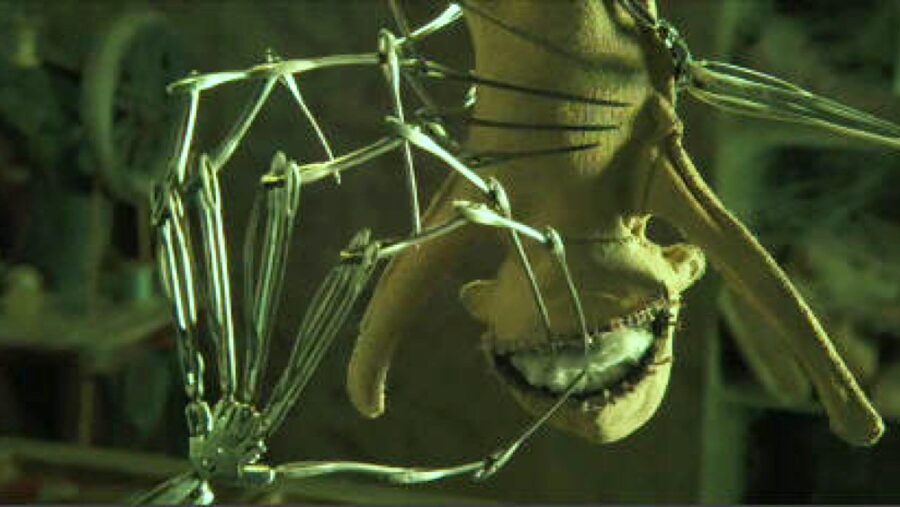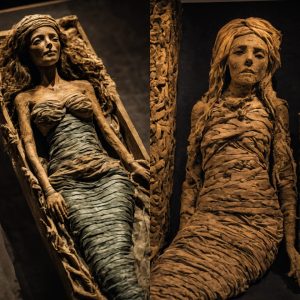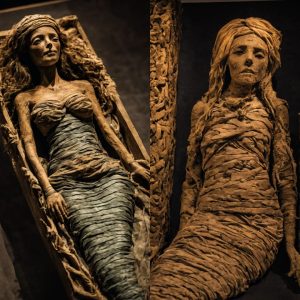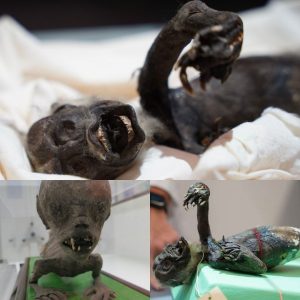
Those who are enamored with the supernatural, the unknown, and the patently weird may be familiar with famed showman P.T. Barnum’s Fiji mermaid. The disturbing fossilized creature, which Barnum claimed to have purchased from a Japanese fisherman in the mid-1840s, has been a popular sideshow attraction for nearly two centuries, with many claiming that the creature proves the existence of mermaids from folklore. Unfortunately for the true believers, a recent Yahoo Lifestyle write-up has debunked this claim, with scientists confirming the fossil is actually a Frankenstein amalgamation of a lizard, a monkey, and a fish.

Though the creature has been elaborately constructed well enough to fool ticket-buyers for longer than any of us have been alive, it seems hard to believe that nobody had confirmed this sooner. After all, once you get a good look at the Fiji mermaid after hearing this news, it becomes all you can see in the famed attraction. The head and torso of the reconstructed man-made monstrosity are from a small monkey grafted to the body of an ordinary fish, while the outstretched clawed fists protruding from the creature belong to a Komodo dragon.

The research team responsible for dissecting the Fiji mermaid was headed by radiologist Joseph Kress, of Northern Kentucky University. Through a series of advanced autopsy processes, including X-rays and CT scans, Kress and his team were able to determine that the mermaid was stitched together like a human centipede, including a skeletal vertebrae of wooden stakes to keep the mutant posed and prevent deterioration.
Since the initial purchase of this creature in the mid-1800s, many copycats have been constructed by other sideshow attractions, including those made from paper-mâché and basic office supplies.

One Fiji mermaid said to be discovered in a Japanese temple just last year was recently debunked as well. The recently discovered creature turned out to be nothing more than convincingly crafted paper, cotton, and cloth, formed into a disturbing voodoo doll’s representation of the mythological Ningyo from Japanese folklore. Like mermaids from traditional sailor’s tales, Japanese Ningyo are said to be fish-like humanoids, representing longevity and wealth in Japanese culture.

While many audiences were quick to spot imperfections and inconsistencies in copycat Fiji mermaid creations throughout the years, the origins of the original P.T. Barnum model have baffled crowds since the exhibit’s inception. According to Kress and his team of scientists, researchers have planned additional tests designed to determine the exact species of fish, monkey, and lizard from which the creature is constructed, with plans to reach out to local zoos and aquariums to court animal expertise.

Though this discovery seems to suggest that humanoid mermaids have not been discovered in any genuine capacity on Earth, scientific discoveries always have new and wonderful findings to offer. Those who feel let down by the deconstruction of the Fiji mermaid may be able to find solace in a number of recent discoveries such as the alien world hidden within the Earth’s mantle, or the recent discovery of 100,000-year-old mammoth bones.








